Wildflowers, Grasses and Other Nonwoody Plants
Media
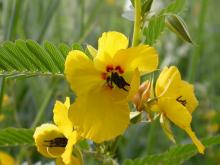
Species Types
Scientific Name
Chamaecrista fasciculata (formerly Cassia fasciculata)
Description
The interesting, bright yellow flowers of showy partridge pea are immediately recognizable. At night, the leaflets close and pull upward into a sleeping position.
Media
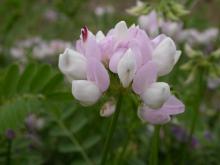
Species Types
Scientific Name
Securigera varia (formerly Coronilla varia)
Description
In summer, you’re almost guaranteed to see big colonies of crown vetch along Missouri's highways. This weedy nonnative plant stabilizes the dirt after road construction but degrades our natural ecosystems.
Media

Species Types
Scientific Name
Torilis arvensis
Description
Hedge parsley is an introduced plant that looks a lot like parsley. It was first collected in Missouri in 1909 and has become much more abundant in recent decades as it spreads along roadsides and railroads.
Media
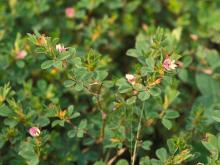
Species Types
Scientific Name
Kummerowia stipulacea (formerly Lespedeza stipulacea)
Description
Korean lespedeza is an Asian clover that was introduced to North America to prevent erosion, to feed wildlife and livestock, and, since it is a legume, to add nitrogen to the soil. A weedy plant, it has spread statewide since the 1930s.
Media
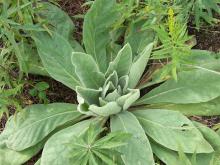
Species Types
Scientific Name
Verbascum thapsus
Description
Mullein immigrated to America along with Europeans, and with them it has spread across the continent. Its fuzzy, green-gray rosettes of leaves and tall spikes of yellow flowers make it easy to identify.
Media

Species Types
Scientific Name
Isopyrum biternatum
Description
To distinguish false rue anemone from "true" rue anemone, look for the following: 5 white (not pinkish) sepals, and leaves present on the flowering stems. Confirm your identification by noting that it's growing in a colony (not singly) and is in a moist, low area.
Media
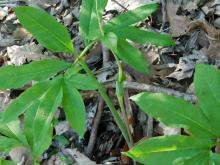
Species Types
Scientific Name
Arisaema dracontium
Description
What could be cooler than finding a green dragon? This leafy green plant with a long, noodly spadix is closely related to Jack-in-the-pulpit. It occurs in the same habitats but is less common and easily overlooked.
Media

Species Types
Scientific Name
Ranunculus hispidus
Description
Hispid buttercup is a densely hairy plant with showy yellow flowers. It is found mostly in the southern half of Missouri, usually in moist locations.
Media

Species Types
Scientific Name
Medicago lupulina
Description
The small, cloverlike flowering heads and trifoliate leaves of black medick are clues that this plant is in the Fabaceae, the bean or pea family. An introduced, weedy species, it is closely related to alfalfa.
Media

Species Types
Scientific Name
Corydalis flavula
Description
The smooth, finely divided, fernlike foliage of pale corydalis is similar to that of the related wildflower Dutchman’s breeches. But in pale corydalis, the small yellow flowers appear tubelike and lipped.
See Also
About Wildflowers, Grasses and Other Nonwoody Plants in Missouri
A very simple way of thinking about the green world is to divide the vascular plants into two groups: woody and nonwoody (or herbaceous). But this is an artificial division; many plant families include some species that are woody and some that are not. The diversity of nonwoody vascular plants is staggering! Think of all the ferns, grasses, sedges, lilies, peas, sunflowers, nightshades, milkweeds, mustards, mints, and mallows — weeds and wildflowers — and many more!





















